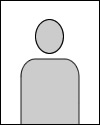3D whole-body skin imaging for automated melanoma detection Journal Article
| Authors: | Marchetti, M. A.; Nazir, Z. H.; Nanda, J. K.; Dusza, S. W.; D'Alessandro, B. M.; DeFazio, J.; Halpern, A. C.; Rotemberg, V. M.; Marghoob, A. A. |
| Article Title: | 3D whole-body skin imaging for automated melanoma detection |
| Abstract: | Background: Existing artificial intelligence for melanoma detection has relied on analysing images of lesions of clinical interest, which may lead to missed melanomas. Tools analysing the entire skin surface are lacking. Objectives: To determine if melanoma can be distinguished from other skin lesions using data from automated analysis of 3D-images. Methods: Single-centre, retrospective, observational convenience sample of patients diagnosed with melanoma at a tertiary care cancer hospital. Eligible participants were those with a whole-body 3D-image captured within 90 days prior to the diagnostic skin biopsy. 3D-images were obtained as standard of care using VECTRA WB360 Whole Body 3-dimensional Imaging System (Canfield Scientific). Automated data from image processing (i.e. lesion size, colour, border) for all eligible participants were exported from VECTRA DermaGraphix research software for analysis. The main outcome was the area under the receiver operating characteristic curve (AUC). Results: A total of 35 patients contributed 23,538 automatically identified skin lesions >2 mm in largest diameter (102–3021 lesions per participant). All were White patients and 23 (66%) were males. The median (range) age was 64 years (26–89). There were 49 lesions of melanoma and 22,489 lesions that were not melanoma. The AUC for the prediction model was 0.94 (95% CI: 0.92–0.96). Considering all lesions in a patient-level analysis, 14 (28%) melanoma lesions had the highest predicted score or were in the 99th percentile among all lesions for an individual patient. Conclusions: In this proof-of-concept pilot study, we demonstrated that automated analysis of whole-body 3D-images using simple image processing techniques can discriminate melanoma from other skin lesions with high accuracy. Further studies with larger, higher quality, and more representative 3D-imaging datasets would be needed to improve and validate these results. © 2023 European Academy of Dermatology and Venereology. |
| Keywords: | adult; clinical article; human tissue; aged; aged, 80 and over; middle aged; retrospective studies; diagnostic accuracy; sensitivity and specificity; melanoma; dermoscopy; image analysis; skin biopsy; skin defect; skin neoplasms; cohort analysis; pathology; diagnostic imaging; retrospective study; epiluminescence microscopy; sex ratio; health care quality; skin tumor; whole body imaging; pilot study; pilot projects; artificial intelligence; age distribution; observational study; image processing; cutaneous melanoma; caucasian; proof of concept; three-dimensional imaging; predictive model; very elderly; humans; human; male; female; article; tertiary care center; lesion volume |
| Journal Title: | Journal of the European Academy of Dermatology and Venereology |
| Volume: | 37 |
| Issue: | 5 |
| ISSN: | 0926-9959 |
| Publisher: | Wiley Blackwell |
| Date Published: | 2023-05-01 |
| Start Page: | 945 |
| End Page: | 950 |
| Language: | English |
| DOI: | 10.1111/jdv.18924 |
| PUBMED: | 36708077 |
| PROVIDER: | scopus |
| DOI/URL: | |
| Notes: | Article-- MSK Cancer Center Support Grant (P30 CA008748) acknowledged in PDF and PubMed -- MSK corresponding author is Michael Marchetti -- Export Date: 1 May 2023 -- Source: Scopus |
Altmetric
Citation Impact
BMJ Impact Analytics
MSK Authors
Related MSK Work









